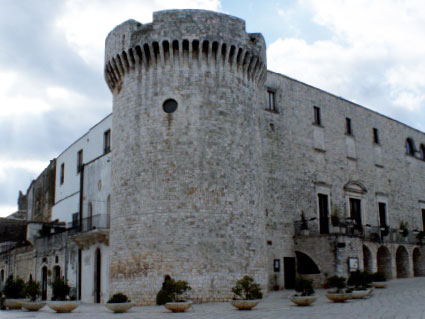




In the present day, the Good Friday processions in Conversano include the performance of the following pieces of music:
Funeral lament
An unusual instrumental piece with roots in antiquity. It opens the procession of the faithful that between the Thursday night and Friday morning accompanies the statue of the Black Christ from the church dell'Isola to the Palazzo dell’Episcopio. The melody, sad and repetitive, is played by a flute and accompanied by the rhythmic measures of a drum.
Miserere
A musical version of four verses of Psalm 50. Passed down orally over recent decades, it almost certainly started off written being written down, probably by the Conversano composer Ignazio Candela, the cathedral organist and choirmaster from 1768 to 1803. The fauxbordon structure, a melody performed by four voices at different intervals but with the same rhythmic articulation, was probably chosen by the composer to facilitate its performance by non-professional singers. It is probably the a cappella piece that best represents the emotions of Good Friday in Conversano.
Band marches
These accompany the statue of Our Lady of Sorrows, with pieces expressing an air of sadness. These pieces are not strictly part of the "holy" repertory (we only need to cite the Miserere from the Troubadour by Giuseppe Verdi) but they are well suited to expressing the Madonna's sorrow.
Stava Maria dolente
The common language version of the first verse of the Stabat Mater. The haunting melody is attributed to Antonio Lotti (1666-1740), celebrated choirmaster of
Venice.
Questo Gesù che miri e Ohimè chi mi consola
There is no concrete knowledge about the origins of this refrain, born of the piety of the common people.
These pieces only partially coincide with the vast repertory performed in Conversano in past centuries during the rites of Holy Week. The local Diocesan Archive even has manuscripts of two cycles of Responsories for Holy Week. The first, for two voices, was composed by an anonymous choirmaster of the cathedral who lived at the end of the 17th century, and the other for four voices dates back to 1801 and was written by the already mentioned Ignazio Candela. Both these pieces have recently been published and constitute the most important documentation of Conversano's musical past.
M° Claudio Ermogene Del Medico